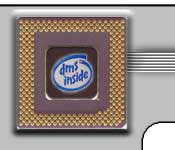|
Improvements in LED-based Fluorescence Analysis Systems
Andrew E. Moe, Steve Marx, Naureen Banani, Matthew Liu, Brian Marquardt, and Denise M. Wilson

This paper presents results from an electronic interface that significantly improves the stability, power output, and spectral flexibility
of LED-based systems used to excite fluorescence or other forms of luminescence. LEDs are an attractive alternative to conventional white
light sources used in fluorescence analysis because of reduced power of operation, enhanced modularity, reduced optical loss, fewer imaging
artifacts, and increased flexibility in spectral control without the need for high overhead optics. Drawbacks of previously presented
LED-based systems include insufficient light output, instability (poor lifetime), and limited flexibility in broadband spectral output. The
LED-array based system here presents, up to a 93% improvement in stability over other LED-based systems, up to one hundred-fold increase in
light output over single LED systems, and millions of possible combinations of spectral output (as compared to a 1-10 possible spectral
outputs with 1-2 LED array based systems). These benefits over previous LED-based systems are achieved at a reduction in power, space, and
cost of at least two orders of magnitude over conventional white-light source based systems. Used in conjunction with appropriate optics,
this electronic interface provides a highly competitive, portable (small footprint) alternative to conventional fluorometer designs.
|



